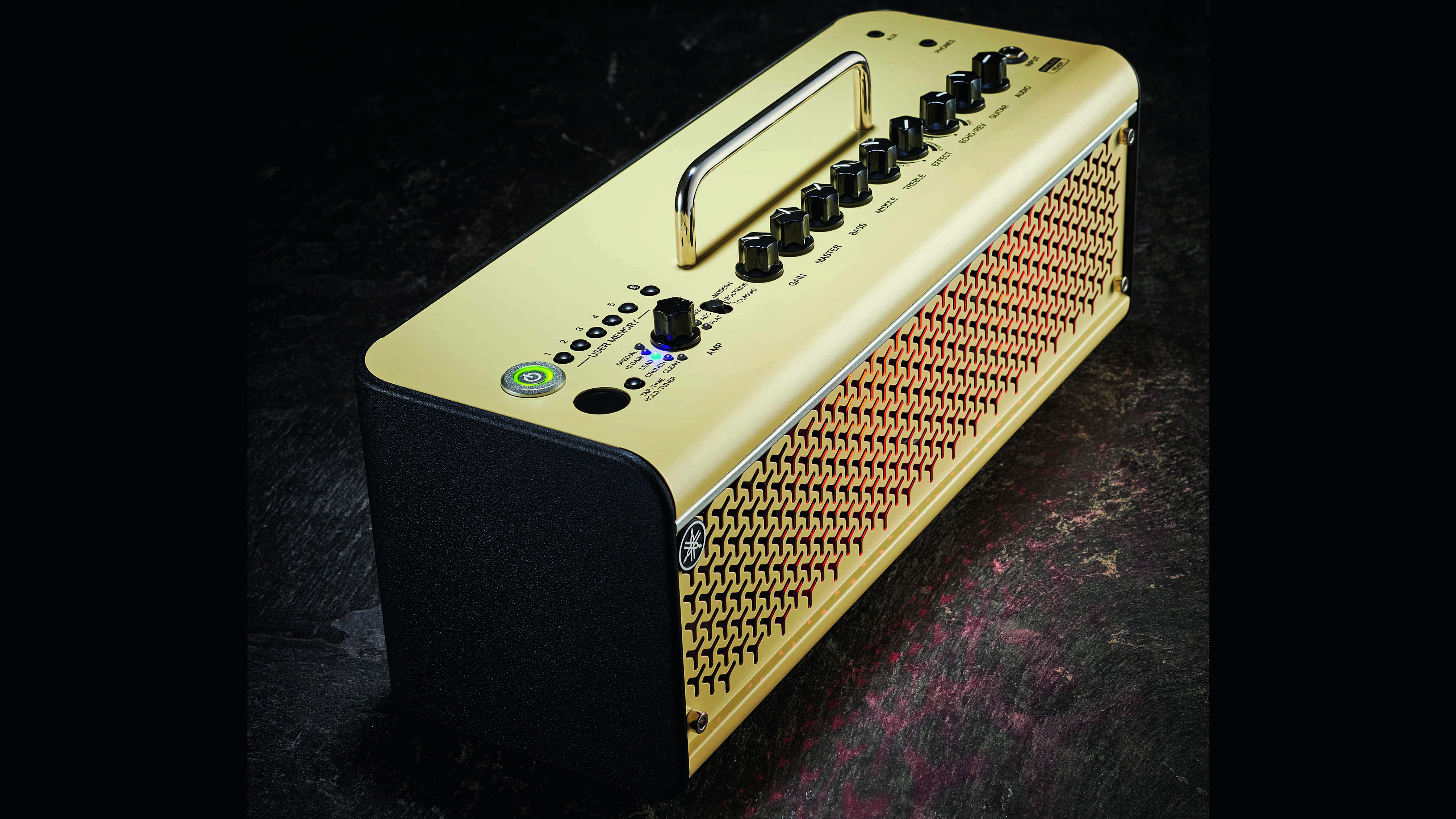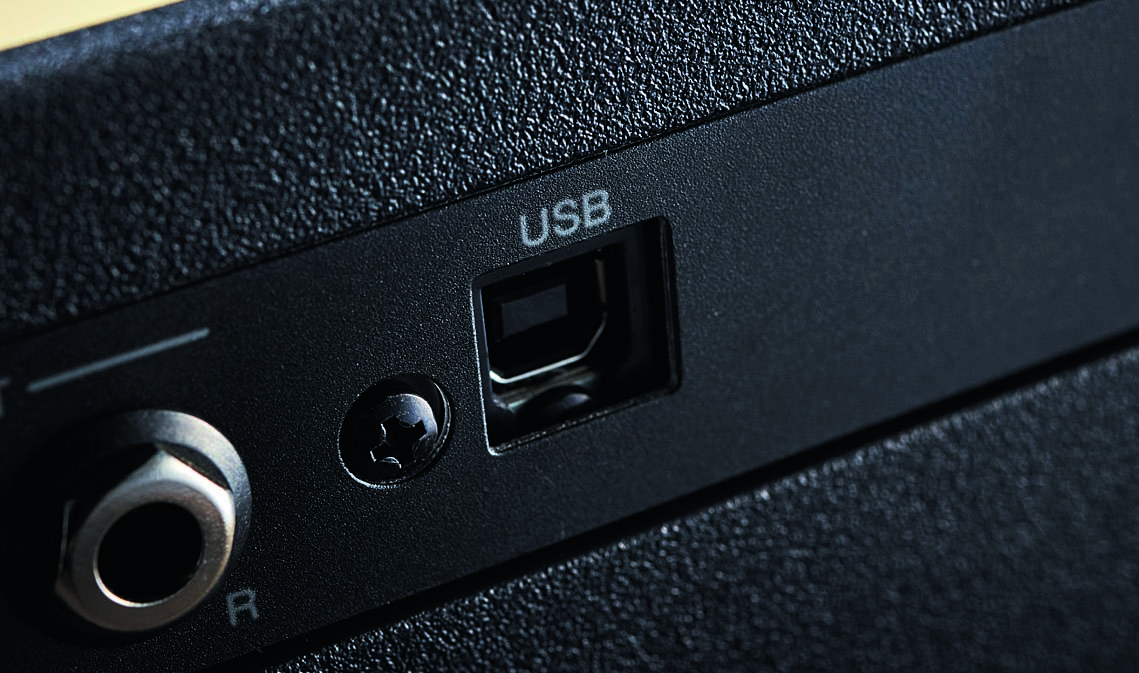MusicRadar Verdict
The functionality adds up to a superb desktop amp for practice, recording and small gigs that builds on the quality foundations of the original THR
Pros
- +
Superb sounds and increased versatility over MKI
- +
Simple, intuitive controls
- +
Great wireless functionality and app connectivity
Cons
- -
Pricey compared to some of the competition
- -
Additional colour options would have been nice
MusicRadar's got your back
What is it?
The original THR10 was developed in 2011 by Yamaha to create what it called the 'third' amp – neither a large valve guitar amp for gigging or smaller combo for recording. This was a 'desktop' modelling amp built for the home – where players spend most of their time.
In response to Yamaha's trailblazing, other companies have developed desktop amps designed for the home, with app functionality and more recently, wireless connectivity.
Yamaha expanded the line to include heads for gigging players, like the THR100HD.
This is Yamaha's follow-up to its THR10 2011 model – itself improved over the years with firmware updates.
The new THRII line encompasses three different combo models; the 20-watt THR10II Wireless (£469), the 30-watt THR30II Wireless (£535) amp we have here and plus the non-wireless 10-watt THR10II (£357). The THRII models now all offer a rechargeable internal battery as well as mains power option for added flexibility.
The new THRII models offer three times as many sounds as the original THR10 and offers sounds for electric guitar, acoustic or bass.
Let's take a closer look…
Want all the hottest music and gear news, reviews, deals, features and more, direct to your inbox? Sign up here.

It's refreshing to play through an amp that doesn't sound worse when you turn it down
Yamaha's concept with its original 2011 THR10 amp was a third way that rejected the bulky back vinyl-covered tradition for an amp that was designed to fit into players' homes in look and sound.
The design allowed it to sit a bookshelf or desktop for easy access and its functionality reflected that too. Its success gave birth to a whole THR series of amps, and it's taken a little longer than we expected for the follow-up to surface. But now it's finally here.
The new three model series includes wireless and non-wireless combos, with this 30-watt wireless model as its flagship.
The new amp has been upgraded in a number of significant ways; it's still a cream finish and four-slice toaster-sized but its improved pair of full-range 3.5-inch loudspeakers have been reworked to enhance bass and stereo spread. These new loudspeakers now require a slightly larger chassis to accommodate.
The moulded black plastic and home-friendly cream steel are as appealing as before, though we'd really have liked to see some additional colour options for this new model.
A pair of orange LEDS give the vibe of glowing valves behind the speaker grill – though this is a modelling amp through and through. And it's a very good one indeed.




Performance and verdict
The guitar amp options have been expanded on this new iteration. There's three modes for each of the THRII's five voices; Special, Hi Gain, Lead, Crunch and Clean.
There are also three bass and three acoustic models to make this a really diverse offering. That's underlined with a bass mode boasting three voices and an acoustic mode that offers the choice of valve, condenser and dynamic mic models.
It's a small touch but a good one nonetheless to see the LED colours on the control panel change depending on which of the three modes you choose – red for 'classic', green for 'modern' and blue for 'boutique'. The other controls will be familiar to most players with gain, volume, bass, mid and treble.

Two additional controls take care of the effects including chorus, tremolo, phaser, flanger and four options with echo and reverb; echo, echo / reverb, hall reverb and spring reverb.
The reverb and tremolo really shine with the Extended Stereo Technology found on this amp. A wide stereo image produces the kind of depth you wouldn't expect from a small guitar amp – if feels like something much bigger.
As well as guitar and audio output controls there’s a tap tempo button that also toggles the THR’s chromatic tuner and extended stereo field functions.
At the back there’s a stereo pair of line outs, which connect to balanced or unbalanced jack plug leads, together with a USB socket and a power socket for the THR’s laptop-style power supply. But you can also use the rechargeable internal battery for up to five hours power.
That's not the only way this model is wireless. It's compatible with the Line 6 Relay G10T transmitter (sold seperately) for cable-less flexibility. You can also edit the amp's parameters and access extra controls via the THR Remote app. It connects via Bluetooth and can access the 16 cab models, two extra reverb models, compressor and noise gate.

It's not essential if you want to just plug in and play, but it offers a more detailed, deeper experience with the amp.
This works very well in practice but the main event here is the sound quality. The 15 guitar amp models here are inspiring and high quality, offering highly usable sounds at lower volumes that underline this amp's value as a home-based tool.

The response certainly feels valve-like and the rich low end and sparkly highs never feel like a compromise. The EQ is sensitive, enabling you to quickly shape your tone. Touch sensitivity is a term banded around a lot but it matters a great deal with modelling amps; giving a player that valve feel that will keep you coming back. And it's unmistakably present here.
This is the result of Yamaha's VCM – Virtual Circuit Modelling; technology that won the backing of legendary engineer Rupert Neve. VCM recreates digital versions of amps with the detail of reflecting their individual components. The idea is the subtlety is reflected.

The THR30II's balance of this tonal detail, ease of use and flexibility are the core of its appeal. So it's undoubtedly a comprehensive amp for the home, with the USB connectivity adding an interface recording amp into the mix. But can you gig with this?
THR30II’s 15W+15W output is fine for smaller gigs, and the line out to a PA can up the level. It's worth noting you'll need the amp's power supply for gigging as you'll only get the THR at half power via the battery, designed to extend its life.
• The 10 best high-end guitar amps

• Boss Katana Air
It’s some of the very best amp modelling we’ve heard from a relatively affordable amp
• Line 6 AMPLIFi 30 review
If Line 6's objective was to allow players to make more of their guitar time, it's succeeded
The market has changed since 2011, Yamaha is now sharing it with the likes of Boss's Katana – already in its Mk 2 model iteration – and recent offerings like the Positive Grid Spark. But none have really embraced the home-friendly form factor and look quite like Yamaha.
This is a superb amp for the home and will inspire you to play more. It comes at a substantial price for something that's a home device first and foremost but consider where you spend most of your playing time. It could make a huge difference to it.
MusicRadar verdict: It's taken a while to come but Yamaha's follow-up to its trail-blazing THR10 improves upon it in fundamental ways that add up to another benchmark home amp. All kinds of guitarists should find the tones they need here, with the connectivity to fit into their lives in ways that will make this amp genuinely more usable than most.
Hands-on demos
Andertons Music
Yamaha
Chris Buck
Yvette Young
Specifications
- Price: £535
- Origin: China
- Type: Digital modelling desktop
- amplifier
- Speakers: 2x 3.5” special design full range
- Output: 30W (2x15W stereo) on external power, 15W (2x 7.5W stereo) on battery
- Inputs: Guitar in, aux in
- Outputs: USB out, headphones out, 2x line out (stereo)
- Dimensions: 420 (w) x 195 (h) x 155mm (d)
- Weight (kg/lb): 4/9
- Cabinet: Steel/plastic
- Controls: Amp select, type select, user memory select x5, Bluetooth pair, tap tempo/tuner, gain, master volume, bass, middle, treble, effect select/level, echo/reverb select/level, guitar output level, audio output level
- Additional features: THR Remote app editing, remote foot controller compatibility, audio streaming via Bluetooth. Bundled with Cubase AI/Cubasis LE software
- Options: Custom Yamaha gigbag available for £63
- Range options: The 20W THR10II Wireless sells (£469), non-wireless THR10II (£357)
- Yamaha
MusicRadar is the number one website for music-makers of all kinds, be they guitarists, drummers, keyboard players, DJs or producers...
- GEAR: We help musicians find the best gear with top-ranking gear round-ups and high-quality, authoritative reviews by a wide team of highly experienced experts.
- TIPS: We also provide tuition, from bite-sized tips to advanced work-outs and guidance from recognised musicians and stars.
- STARS: We talk to musicians and stars about their creative processes, and the nuts and bolts of their gear and technique. We give fans an insight into the craft of music-making that no other music website can.

